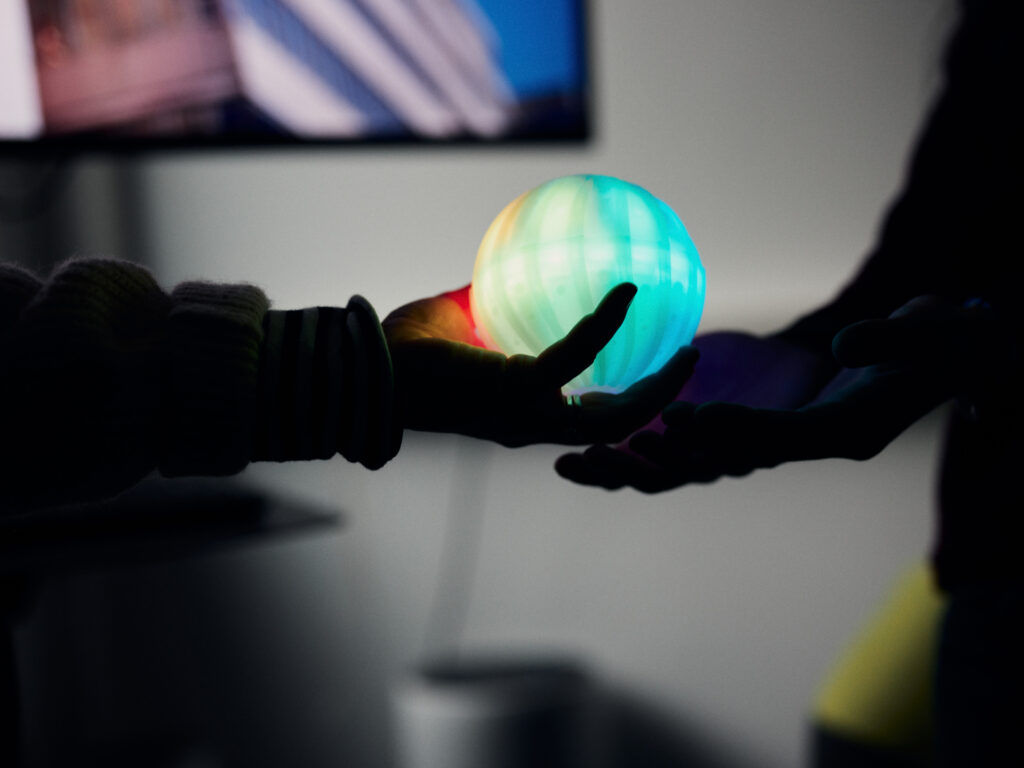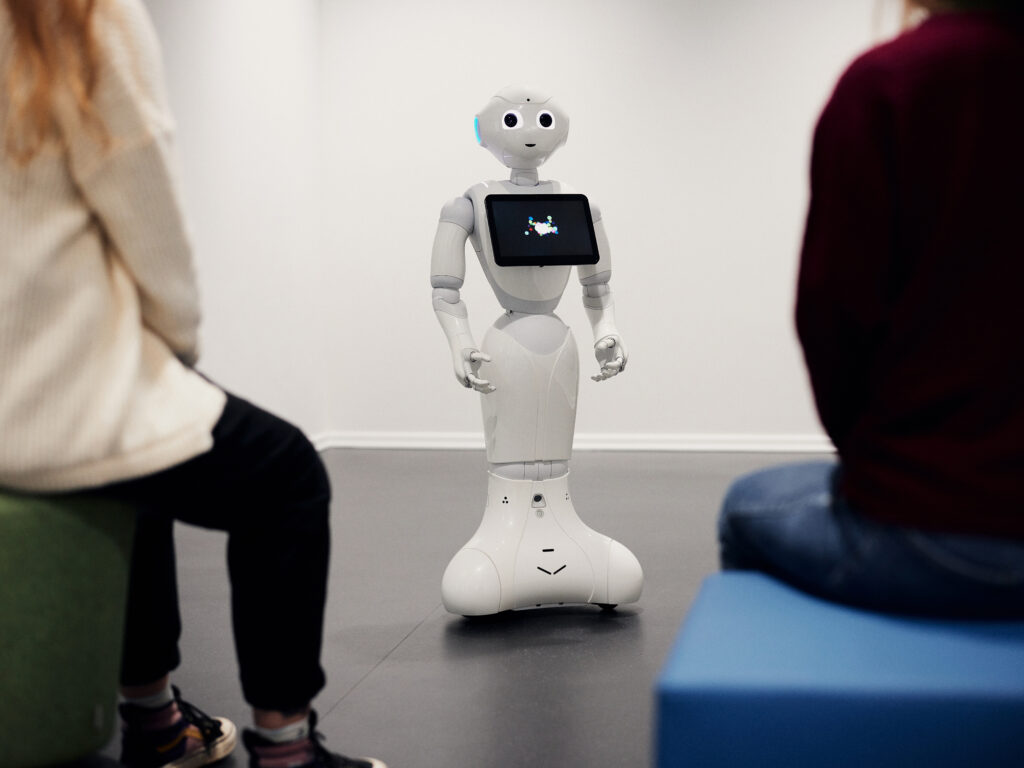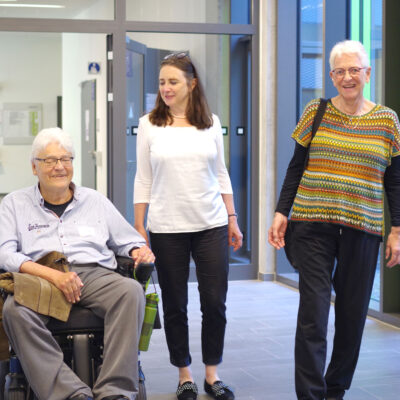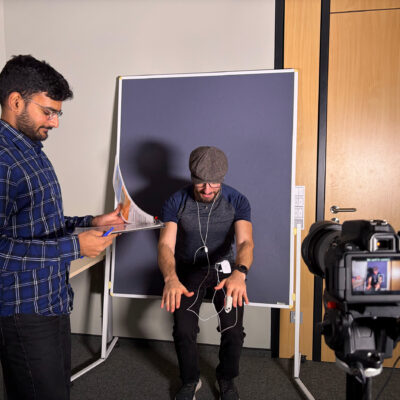At the ‘Interactive Assistance in Medicine and Nursing Care’ showroom, visitors can follow along as the mobile robot Nao teaches physical exercises and see how the virtual assistant Flobi provides therapy for children with ADHD, or learn how artificial intelligence can be used to detect atrial fibrillation. With this exhibition at the OWL Medical School at Bielefeld University, the working groups ‘Medical Assistance Systems’ and ‘Interactive Robotics in Medicine and Care’ are showcasing high-tech assistance systems for visitors to experience firsthand.
Medical assistance systems (MAS) are complex technologies that are designed to provide support to patients in their daily lives. ‘This includes both individuals whose physical or mental capabilities are permanently or temporarily impaired,’ explains the computer scientist Professor Dr.-Ing. Britta Wrede, who heads the ‘Medical Assistance Systems’ working group. MAS are intended to foster patients’ autonomy. ‘This is why the technology is specifically designed to maintain or restore autonomy, rather than making users dependent on it. With improvements in a patient’s condition, the system can be gradually scaled down.’

© Bielefeld University/M. Adamski
The MAS on display at the showroom are not just for patients: ‘We are also working on creating innovative solutions that provide assistance to medical professionals and offer interfaces for different groups of users,’ says Professor Dr.-Ing. Anna Lisa-Vollmer, who heads the ‘Interactive Robotics in Medicine and Care’ working group. This includes family members, caregivers and nurses, and doctors.
In this series of exhibits, researchers and interested members of the public are presented not only with commercial products but also with the latest research prototypes. The showroom currently has 13 exhibits on display to see – and test out. These include a virtual assistant for treating children with ADHD, a virtual reality training simulation for blood draws and infusions, and a robot seal that is used in geriatric care for individuals with dementia.

© Bielefeld University/P. Pollmeier
Nao goes mobile
One of the highlights of the assistance systems on display is Nao: the humanoid robot stands at just 58 centimetres but has a big role to play in working with children. Nao can move his arms and legs in all directions – just like a human – and is therefore ideal to demonstrate how to perform to physiotherapy exercises in paediatric surgical settings. ‘Nao helps young patients recover from trauma or restore their mobility after a surgery,’ says Vollmer. ‘But we also use Nao in child and adolescent psychiatry to encourage more physical exercise in young people with depression.’
Nao does not just show how to do the exercises: he also explains and motivates the children – even if Nao himself has reached his limits. ‘You are welcome to do it faster than me,’ Nao would then say. The mobile robotics study, which is taking place in paediatric surgery and child and adolescent psychiatry clinics at the Bethel Protestant Hospital; trauma surgery and orthopaedics clinics at the Lippe Hospital; and at the Hand & Foot physiotherapy practice in Bielefeld, has been met with positive feedback, ‘especially from the children themselves,’ say Vollmer.
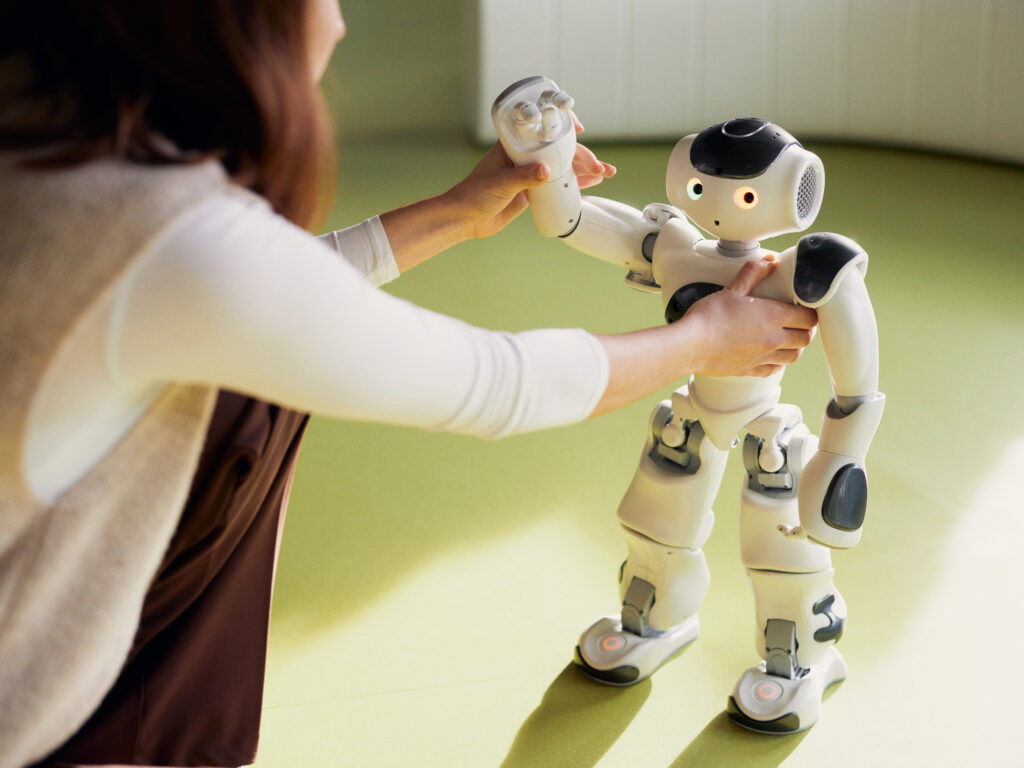
© Bielefeld University/P. Pollmeier
Findings incorporated into research and development
The use of robots in therapeutic settings offers researchers the opportunity to refine their developments. As Vollmer explains, ‘in talking with users and their social network of therapists and doctors, we ask about their needs and incorporate these into the development process. We are going a step beyond purely technical aspects, especially in the mobile robot project.’
The showroom has been well received by users. As Britta Wrede explains, ‘generally speaking, the research and development of such technologies is very heavy on engineering and technical details. We have smart deep neural networks that can do all sorts of things. But this might not help address users’ needs. We want to get to the bottom of what human users need.’ One thing is already clear: ‘we need training modalities for those who will be using these new technologies,’ say Anna-Lisa Vollmer. As the need for support in medicine and nursing care has been increasing, both professors have noticed that reservations about using such technologies have also been decreasing over time.
Artificial intelligence makes a diagnosis
An important aspect of the showroom is that it allows visitors to look behind the scenes of these new technologies. One example of this is an AI-based assistant to help diagnose atrial fibrillation. ‘If atrial fibrillation only occurs occasionally, it is difficult even for trained doctors to recognise. Patients have to be observed for days or even weeks in order to make a diagnosis,’ says Britta Wrede. Artificial intelligence should help doctors and save time. And that’s not all: ‘We want to create an AI system that uses visualizations, for example, to show how to recognise atrial fibrillation. This could help doctors in researching the onset of atrial fibrillation and facilitating early diagnosis. And junior doctors can also learn from such AI-driven explanations.’
Finally, students also stand to benefit from the showroom. ‘With advance notice, all of the exhibits can be given a test run and will soon be available to be lent out,’ says Vollmer. Visiting hours for the public and events, including lectures and workshops, are also in the works. As Britta Wrede explains, ‘this type of participation is important. To build an appreciation of the relevance of these technologies, we have to work closely with one another and exchange ideas.’ There is a skilled worker shortage in every corner of healthcare, whether in therapy, diagnostics, or care. ‘In the future, interactive assistance systems will help secure high-quality medical care.’

